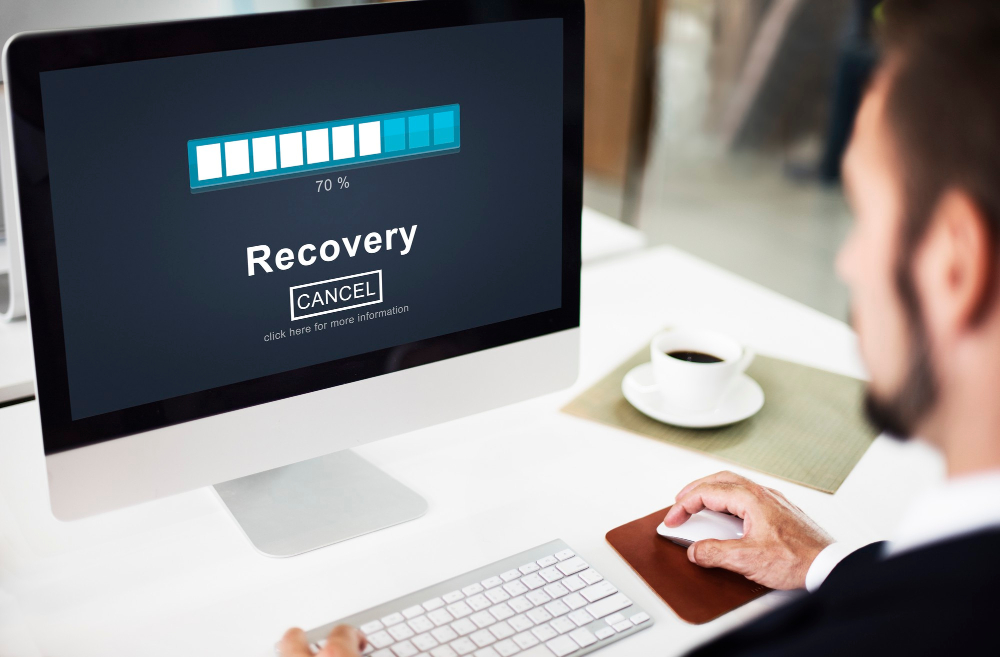
Have you ever felt that gut-wrenching moment when you realise you’ve lost important data? Whether it’s a hardware failure, accidental deletion, or a cyber attack, data loss can be incredibly stressful.
But don’t worry—recovering your lost data might be easier than you think.In this post we’ll take a look at the best free and paid software options to transition tragedy into triumph.
Understand Your Backup Options
Storing data on company servers or using cloud backup services has become standard for many businesses. However, even a basic routine backup to a USB stick or an external hard drive can save you from disaster.
If you don’t already have a backup system in place, remember the old saying: “The best time to start was yesterday; the second best time is now.” Numerous data backup software and disk cloning packages can automate the process, making data recovery straightforward.
Top Data Recovery Software
EaseUS Data Recovery Wizard
EaseUS is a standout choice for both Windows and Mac users. It uses AI to recover files from hard drives, SSDs, memory cards, and USBs. EaseUS offers a fast deep-scan function and is very user-friendly, making it ideal for beginners and experts alike. You can even get 25% off any license today with the code TECHRAD25.
Stellar Data Recovery
Stellar Data Recovery is another popular choice, especially for businesses. It supports a wide range of devices and offers quick and deep scan options. While it’s a bit pricier than some competitors, its advanced search capabilities and support for numerous file formats make it a strong contender.
Disk Drill
Disk Drill is known for its ease of use and comprehensive feature set. It supports a variety of media types and can recover data from almost any scenario. Disk Drill offers a preview feature, allowing you to see which files are recoverable before you commit to restoring them.
AnyRecover
AnyRecover supports over 2000 different device types and claims to handle over 500 data loss scenarios. It’s available for both Windows and Mac, and even extends its support to iOS and Android devices. AnyRecover offers a trial version that lets you preview and recover up to 100MB of data.
OnTrack EasyRecovery
OnTrack EasyRecovery comes in multiple editions, offering solutions for everything from simple file recovery to advanced RAID recovery. While the deep scan feature can be a bit buggy, the quick scan is fast and effective. OnTrack also allows for disk imaging and recovery from CDs and DVDs.
Best Free File Recovery Software
For those who don’t need extensive features, free data recovery tools can be incredibly useful. Here are some top free options:
Stellar Free Data Recovery Software
Stellar’s free version allows up to 1GB of data recovery. It’s efficient and quick, making it a great option for small recovery tasks.
DMDE Free Edition
DMDE offers a high success rate for recovery and is portable, meaning it can be run directly from a USB stick. Its interface may be intimidating, but it’s a powerful tool once you get the hang of it.
Recuva
Recuva is an affordable option with fast scan times. It’s not as feature-rich as some competitors, but it’s very effective for basic data recovery needs.
TestDisk and PhotoRec
This powerful duo can recover both lost partitions and files. While TestDisk is command-line based, PhotoRec offers a GUI for easier use. Both tools are free and cross-platform.
Wise Data Recovery
Wise Data Recovery is user-friendly and offers intuitive filters and data quality indicators. Its free version is generous, allowing recovery of up to 2GB of data.
Your Next Steps
If you’ve lost data, don’t panic. Follow these steps to increase your chances of recovery:
- Stop Using the Affected Drive: Avoid writing new data to the drive to prevent overwriting lost files.
- Choose the Right Tool: Based on your needs and the extent of data loss, select a data recovery tool from the options above.
- Create a Disk Image: If possible, create a disk image to avoid further damage during recovery.
- Run a Scan: Use the chosen software to scan for recoverable files.
- Preview and Recover: Preview the files to ensure they are intact, then proceed with the recovery.
By following these steps, you can effectively recover your lost data and minimise future risks. Invest in a reliable backup solution to protect yourself from future data loss.
